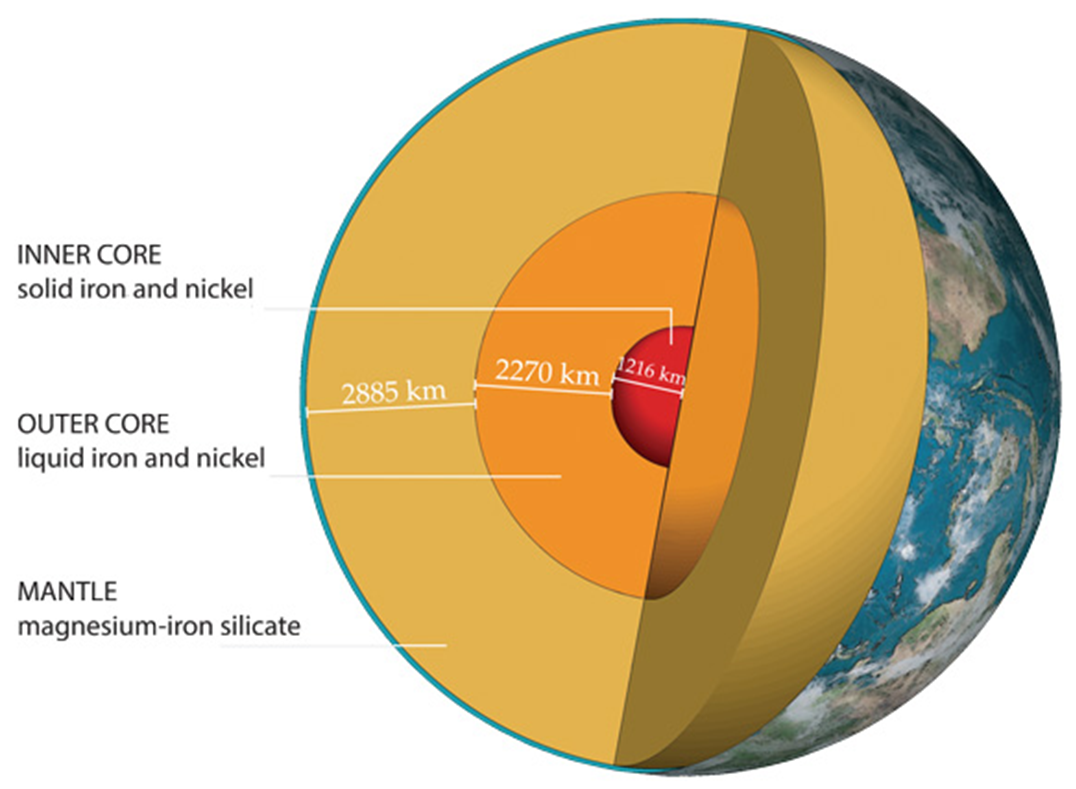PX282 - J5 - interiors
earth

image: British Geological Survey
- earth is differentiated into layers
- it has an iron core, silicate mantle (rocks), and a crust of lighter minerals
- heavier materials sank when planet was molten
- the mantle is solid, but flows and convects on geological timescales

image: British Geological Survey
-
seismic activities cause different waves:
- pressure/primary/p-waves are compressional, that propagate in solids and liquids
- shear/secondary/s-waves are transverse, that propagate only in solids
-
these are probed with seismology
-
the shadow zones of these waves allow the interior to be mapped
-
bulk of the earth is dominated by Fe, O, Si, Mg in refractory compounds (solids at high temperatures)
-
it is strongly deficient in common volatile* elements, eg: H, C, N
-
this implies that it was formed in warm environment where H
O, CH , CO , NH did not form solids -
the interior remains hot due to radioactivity, with heat flux
Wm -
a strong magnetic field, generated by a magnetic dynamo
-
earth seems to be unique in exhibiting plate tectonics
-
it has a fractured lithosphere (crust and upper mantle) that moves on convecting athenosphere
-
new crust is created at mid ocean ridges that reveals the history of the magnetic field of earth
-
this shows polarity reversal in a
Myr cycle -
this is strong evidence of a dynamo operating in earth
-
vocalic island chains (eg. canary islands) above mantle plumes (upwelling convection cells)
-
it is expected other terrestrial planets also differentiated, and heated by radioactivity
-
looking at the cooling timescales:
- so, the interior of smaller objects tend to be cooler
moon
- lunar seismology shows thicker lithosphere and small molten core
- there is no global magnetic field, so the dynamo is not active
- but there is evidence of global magnetic field in the past from rock samples
mars
- recent detections of marsquakes show that mars also has a thick lithosphere, and a molten core
- there is no global magnetic field
- there is evidence of dynamo in the past
venus
- no seismology, but volcanically active
- lacks plate tectonics and magnetic field, which is not well understood
mercury
- high density implies an oversized iron core
- that together with tidal heated may explain its weak magnetic field
- it may have lost most of its mantle in a giant collision
- this left behind the relatively large core, similar to the formation of earth's moon